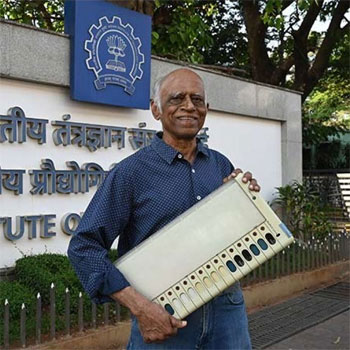The Electronic Voting Machine (EVM) is a reliable system for conducting elections in which one person has to be elected out of many candidates. The EVM is designed for single posts and single votes. In the 1980s, the Election Commission of India initiated efforts to modernize the voting process and reduce electoral fraud. Professor A.G. Rao, along with his team at the Indian Statistical Institute (ISI) in Kolkata, and later Professor Ravi Poovaiah, played crucial roles in designing and developing EVMs for use in Indian elections. Their work led to the creation of a reliable and tamper-proof electronic voting system that has been widely adopted in India. The EVMs developed by Professors Rao and Poovaiah's team have several security features to prevent tampering and ensure the integrity of the voting process. These include encryption techniques, secure storage of votes, and built-in mechanisms to detect any attempts at manipulation.
The introduction of EVMs has revolutionized the electoral process in India, making voting faster, more efficient, and less prone to fraud. EVMs have been used in multiple general elections and state assembly elections in India since their introduction, and they have generally been well-received for their effectiveness in streamlining the voting process and improving the accuracy of vote counting.
